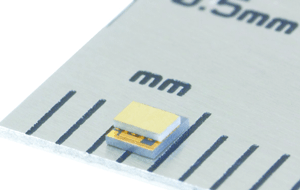- News
14 February 2012
Nextreme’s thin-film thermoelectric surpasses 60°C temperature differential of bulk thermoelectric
 Nextreme Thermal Solutions of Durham, NC, USA, which designs and manufactures microscale thin-film thermal management and power generation modules and sub-systems, says that its thin-film thermoelectric technology has achieved a 60.1°C temperature difference between its cold and hot sides at an ambient temperature of 24.7°C, bringing it on par with the performance of bulk thermoelectric technology.
Nextreme Thermal Solutions of Durham, NC, USA, which designs and manufactures microscale thin-film thermal management and power generation modules and sub-systems, says that its thin-film thermoelectric technology has achieved a 60.1°C temperature difference between its cold and hot sides at an ambient temperature of 24.7°C, bringing it on par with the performance of bulk thermoelectric technology.
The 60°C temperature milestone (deltaTmax) reflects the ability of the thermoelectric device to pump heat efficiently. Nextreme says that this new level of performance translates to improved cooling efficiency, lower input power requirements, and greater opportunities for solving thermal issues in electronics, photonics, automotive, avionics, and high-speed PCR (polymerase chain reaction) applications.
The electronic industry's continued trend to smaller form factors, greater circuit density, and highly integrated packaging has translated into significant thermal problems for electronics-related manufacturers, Nextreme says. The firm reckons that, as a result of the latest technology achievement, it can now bring its thermal management solutions to additional markets that require not only the existing advantages of its products, but also the performance provided by the new capability.
“Our thin-film technology has now achieved the performance level of standard bulk thermoelectrics,” claims VP of engineering Dave Koester. “Achieving a 60°C deltaT at room temperature raises the bar for improved efficiencies and lower operating costs for our customers while opening up new markets for Nextreme,” he adds.
The improved performance is the result of new materials development at Nextreme and the use of interconnect and contact technology developed at the Center for Solid State Energetics at RTI International research institute of Research Triangle Park, NC.
Nextreme will be introducing new products with the higher level of cooling performance during 2012.
